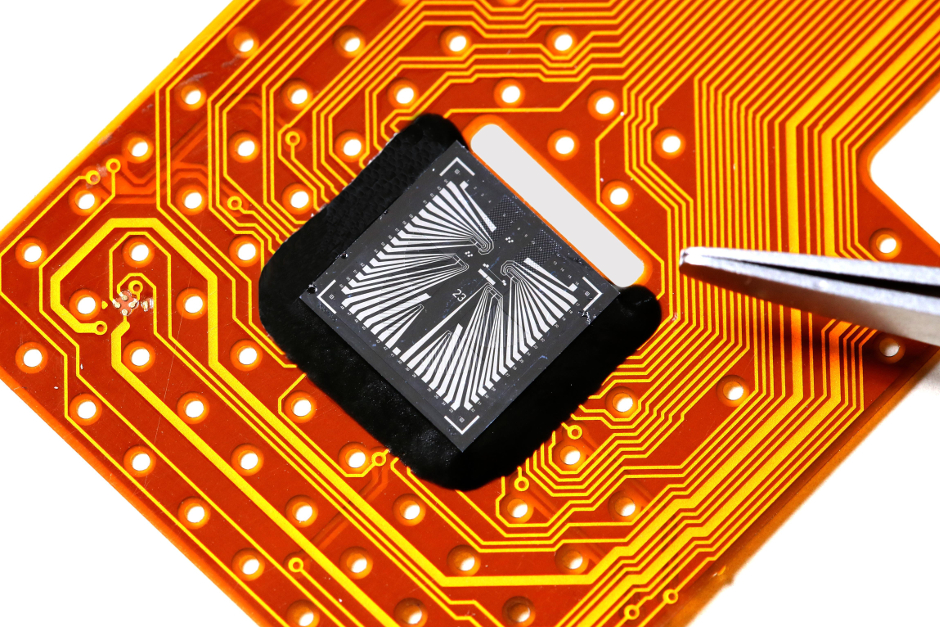Researchers in Switzerland have developed a tiny, portable sensor system that can encapsulate and analyse biomarkers in sweat, an advance that could help provide insights into a person’s health.

The miniature chip was developed by researchers at EPFL’s Nanoelectronic Devices Laboratory (Nanolab), headed by Prof Adrian Ionescu, working in association with Xsensio, a start-up specialising in so-called lab-on-skin technology for next-generation wearables.
Their system, which can be placed directly on a person’s skin or integrated into a bracelet, can determine variables such as levels of sodium and potassium in sweat, body temperature and pH. The data can then be sent to a smartphone.
The system uses capillary action to draw minuscule amounts of sweat into the heart of the chip, where it is analysed. The chip contains four silicon sensors that are around 20nm thick, making them extremely sensitive. Each sensor is coated with a different material so that they can each detect different biomarkers.
“Our platform is truly modular,” said Esmeralda Megally, CEO of Xsensio. “By depositing different biochemical layers on each of the miniature sensors, we can measure a host of variables ranging from electrolytes and metabolites to tiny molecules and proteins. That gives users personalised real-time data.”
The system includes two fluidic layers that sit between the chip and the user’s skin. These layers “pump” up sweat from the skin and carry it to the sensors. Because this pump relies entirely on capillary action, it runs continuously without electricity.
“Ours is the only device out there that includes such a system on a chip,” said Ionescu. “Even today’s most advanced devices use sensors that are 10,000 times bigger than ours, and need a larger volume of sweat to be able to effectively analyse biomarkers.”
Such extreme miniaturisation was made possible thanks to sensor technology developed at the Nanolab. Xsensio provided the nanofluid interface with users’ skin and the thin biochemical layers that enable the sensors to detect specific biomarkers.
The project team is now working on incorporating the system into a wearable device so that it can be launched commercially.
The data collected by the system can provide insights into a user’s health and wellness; chlorine levels can give an early indication of cystic fibrosis, and ion levels can signal dehydration. Measurements of other biomarkers can flag symptoms of fatigue and stress.
The system was presented at the 63rd International Electron Devices Meeting, held between December 2-6, 2017 in San Francisco.




Poll: Should the UK’s railways be renationalised?
Rail passenger numbers declined from 1.27 million in 1946 to 735,000 in 1994 a fall of 42% over 49 years. In 2019 the last pre-Covid year the number...